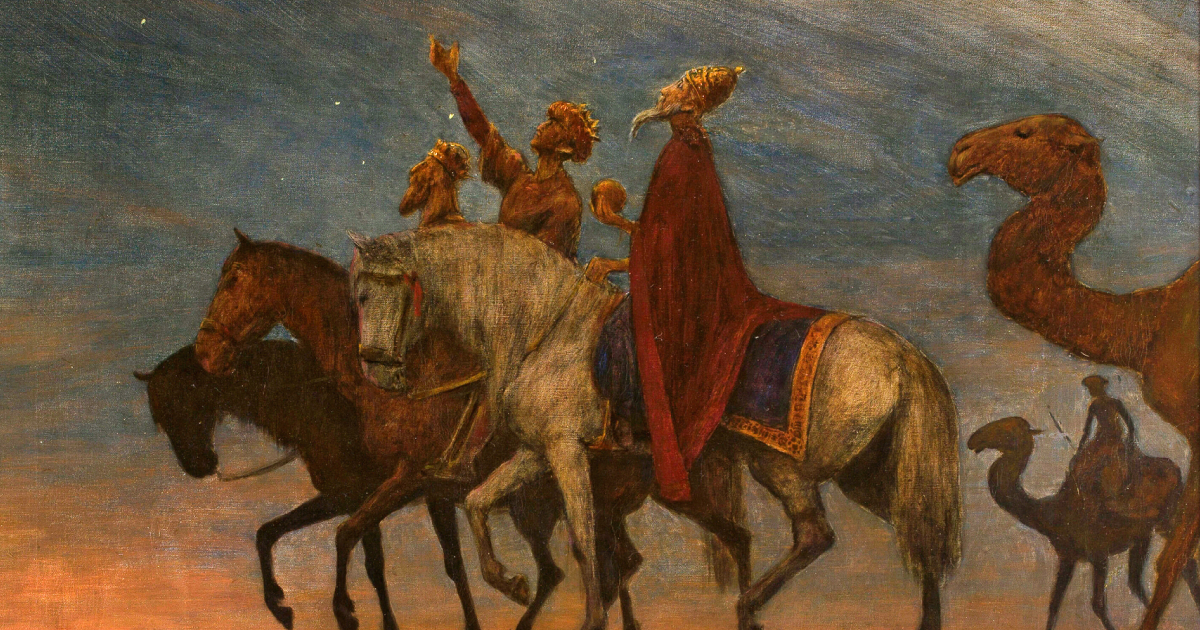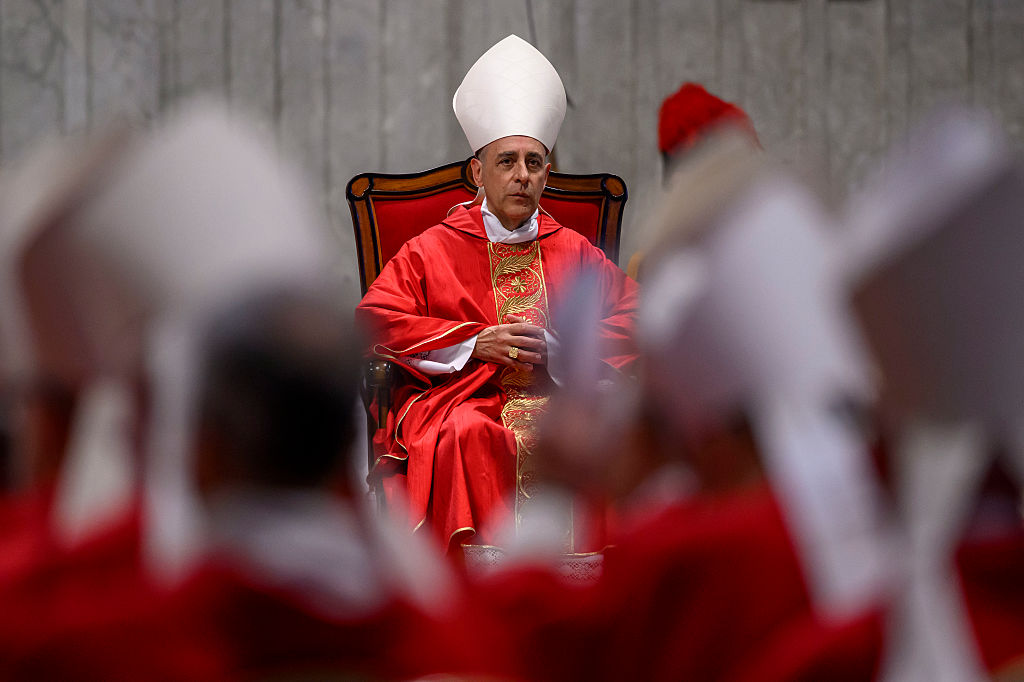This year is the 1,700th anniversary of the Council of Nicaea. Here we invite a writer to reflect on articles of the Nicene and Apostles' Creed:
In an astonishing scene in the first chapter of his Gospel, St Luck stages a sisterly encounter between Mary and her cousin Elizabeth. Both women are pregnant, but neither is exemplary of the conventional mother-to-be. Elizabeth is beyond the usual childbearing age, while Mary has conceived, in the words of St John, "not by the will of man", and thus falls outside the orthodox patriarchal set-up of first-century Palestine.
Conventionally speaking, Mary is not a proper mother at all. The child she is carrying is the fruit of a love more powerful than the marital variety. St Luke might just have been a physician on the staff of St Paul, and so would have known a thing or two about pregnancy, though the scene might of course be entirely fictional.
When Elizabeth sets eyes on Mary, the child in her womb leaps for joy. He won't, however, be joyful for long. He grows up to be John the Baptist, a hippy-like figures who hangs out in the desert, and whose wrathful political prophecies panic the political establishment into beheading him.
The child Mary is carrying will also grow up to be executed, though in his case by the occupying Roman authorities rather than by a local Jewish ruler. Crucifixion was a punishment reserved by the Romans for political rebels and runaway slaves. It had nothing to do with religion, which didn't interest the Romans in the least, unless it was potentially seditious.
Both babies are destined for political murder. Luke's scene was later to inspires some of the most beautiful lines ever written by the poet Yeats, from "The Mother of God":
What is this flesh I purchased with my pains,
This fallen star my milk sustains,
This love that makes my heart's blood stop
Or strikes a sudden chill into my bones And makes my hair stand up?
What do Mary and Elizabeth talk about? Not breastfeeding or morning sickness, but revolutionary politics. Mary bursts out with a passage from the Hebrew Scriptures, perhaps sensing and dancing as she does, praising the Yahweh who has brought down the mighty from their thrones, filled the hungry with good things, and sent the rich empty away (Luke 1: 52-3).
As an obscure young woman from a notoriously backward region of Palestine, Mary is comparing her own elevation as mother of Jesus to the raising up of the poor. Her pregnancy is a sign of the victory of what the Hebrew Scriptures call the anawim, the oppressed and despised of the world.
Some New Testament scholars maintain that the words Luke puts into Mary's mouth here are part of a Zealot chant, the Zealots being underground anti-imperialist insurrectionists memorably satirised in Monty Python's Life of Brian.
There were almost certainly a few of them in Jesus's entourage. Whether or not Mary's song is Zealot-inspired, the revolutionary reversal she speaks of is a familiar theme of the Scriptures. You will know who Yahweh is when you see the humble exalted and the rich toppled from power. The only authentic power is one born of weakness.
The child Mary bears will grow up to be vagrant homeless, propertyless and without a profession. He is a scourge of the religious establishment who keeps his own family at arm's length and preaches astonishingly, that the riff-raff of the highways will be admitted to his Father's kingdom before the eminently respectable folk who observe the law.
He is also remarkably relaxed about sex, unlike a good many of his followers over the centuries, and has such a good time with his friends that they are all denounced as gluttons and drunkards.
Consider, then, the Church whose mission is to bear witness to this disruptive figure. If it has lived out his compassion for the poor, it has also thrown its authority time and again behind the privileged and powerful.
If it has called for a curb on the excesses of capitalism, it has also in its day supported a squalid array of fascists, autocrats and anti-Semites. There are times when it has forgotten that it exists for the sake of transforming the world, and striven to accommodate itself to the world's crooked priorities.
It has produced both Francis of Assisi and a series of extravagantly corrupt Renaissance popes. It has also wreaked immeasurable human suffering by its stiff-necked views on sexuality, and piously turned its eyes from the abuse of countless children at the hands of priestly predators.
It has also manifested the arrogance of those who can't believe that they are ever mistaken. When asked what would happen if the Church reversed its teaching on contraception, one prelate replied that it would simply have moved from one state of certainty to another state of certainty.
Like a lot of Catholics of my generation, I sat through years of so-called religious education at secondary school without ever once having to open a Bible. Can one still, given all this, believe in the holy Catholic Church? Perhaps. But there are times when it is a lot easier to believe in the Yeti.
Photo: Image by Arcadia
This article appears in the October/November 2025 edition of the Catholic Herald. To subscribe to our thought-provoking magazine and have independent, high-calibre and counter-cultural Catholic journalism delivered to your door any where in the world click HERE.












.jpg)



